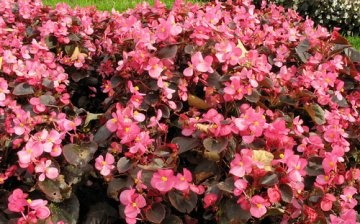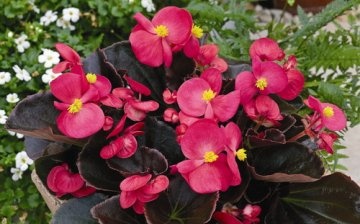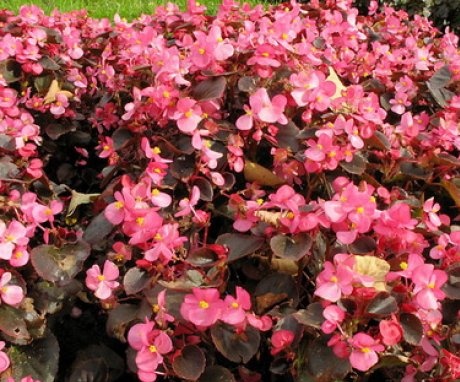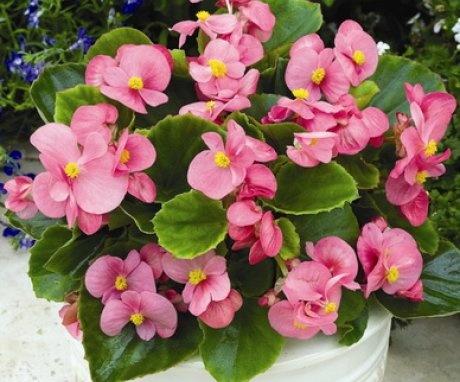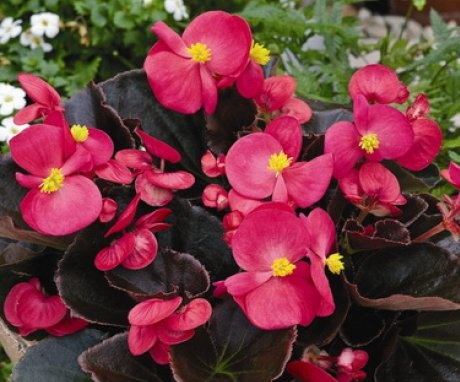Such a simple care for ever flowering begonia
Begonia is a flower of extraordinary beauty that has an amazing ability to bloom all year round. It was first brought from Brazil in 1821 to the Berlin Botanical Garden. This flower constantly pleases the eye with its pink petals. Caring for an ever-flowering begonia is easy, but the flower will thank you for your efforts with lush flowers. While this plant is being looked after - it blooms without ceasing, even the feeling is created that begonia blooms forever. Hence the name - ever-flowering begonia.
Content:
- Types of begonias and the basics of their cultivation
- Landing
- Watering
- Possible begonia diseases and their treatment
Types of begonias and the basics of their cultivation
Since the appearance of this flower, a huge number of its species have appeared. There are already nearly 900 varieties begonias, each of which has a unique shape, size and color of petals. The smallest begonia is only a few centimeters long, and the largest is about 3 meters.
Distinguish between begonias shrubs, semi-shrubs and common herbaceous plants. For home growing conditions, specialists have bred hybrid ornamental varieties.
In order to grow a strong plant, you need to know some of the basics of begonias care. So begonia loves the sun. Being in the shade, its flowers become small, lose their attractiveness. But that doesn't mean begonia should grow in full sun. It is best if it is just a bright place, since direct sunlight can cause severe burns to the leaves.
Begonias love peace and warmth, so it is necessary to immediately determine 100% of the place where the flower will grow. The optimum temperature for growing this plant in summer is not more than +20 degrees, in winter - not lower than +18.
The ever-flowering begonia is often grown in flower beds. To do this, she is taken out into the street at the end of May, when it is already warm outside and frosts are no longer expected. Like all plants, it needs to be fed, watered, loosened the ground. Begonia should be planted in well-drained soil to avoid rot and fungus.
Street begonia blooms until the first frost. Then it needs to be transplanted into pots again and brought into the room. At this moment, the plant can throw off all the flowers, but after a while, getting used to the new conditions, it will bloom again.
Landing
The main thing in planting begonias - choose the right soil. The soil for this flower should be fairly light and rich in nutrients. In addition, loose soil and good drainage should be chosen, since begonia does not like stagnant water. Usually gardeners make a mixture of the following ingredients:
- leafy land;
- sod land;
- peat;
- humus earth;
- sand.
If the soil for the flower is purchased in a store, then it is recommended to add sphagnum moss to it.
It is necessary to transplant ever-flowering begonia only when the pot becomes cramped, usually once every two years. Young flowers are transplanted every spring. When replanting, do not add soil to the edge of the pot. This is necessary so that new roots that form over time can be covered with earth. With the correct transplant, the new plant will delight with flowers in a month and a half.
Watering
In order for the flower to feel comfortable, it must be properly watered.Begonia does not like too wet soil, but needs good regular watering in hot summers and moderate in winter. Gardeners recommend watering begonia when the top layer of the earth has dried by about 1-2 cm. Water for irrigation should be warm and soft, be sure to stand for about a day. Watering should be done at the same time of day, preferably in the morning.
The ever-flowering plant is very picky about air humidity. Begonia must never be sprayed, because of this dark spots appear on the leaves. To maintain the necessary humidity, you can put some kind of vessel with water next to the flowers.
Possible begonia diseases and their treatment
Every gardener knows that in order for plants to be pleasing to the eye, they need to be fed. And begonia is no exception. It is necessary to start fertilizing the flower as soon as buds appear on it. A complex liquid fertilizer for flowering plants is best suited for this purpose. You need to feed once every two weeks.
If properly cared for ever-flowering begonia, then no pests and diseases are afraid of her. But you still need to know about the most common pests.
Most often, begonia is affected by spider mites and aphids. They settle on the leaves of the plant, usually on the back of them, and feed on the sap of the flower. To fight the mite, use a mild soapy solution of tobacco or a soapy solution of chamomile. These solutions are sprayed and washed underneath the leaves of the plant.
Special preparations that contain feverfew or insecticides will also help to cope with ticks or aphids. These pests spread very quickly in hot dry weather. Therefore, you should especially carefully monitor the plants during this period. It is necessary to process flowers until harmful insects disappear completely.




